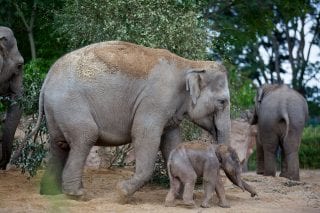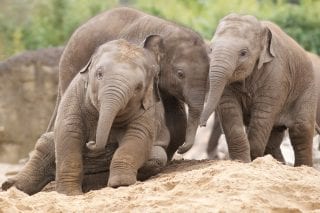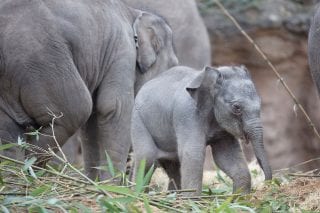Fun Facts
A Tonne of Dung
Each elephant creates just under one tonne of poo per week!
Megaherbivore
Asian elephants are one of the last few remaining megaherbivores. A megaherbivore is a plant-eating mammal that reaches an adult body weight of more than 1,000 kg.
Memory & Intelligence
Elephants are known for their excellent memory and their intelligence. Matriarchs will remember ancient seasonal migration routes and watering holes. This knowledge is passed down from generation to generation and each matriarch will lead the herd through these routes every year.



